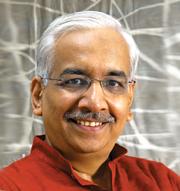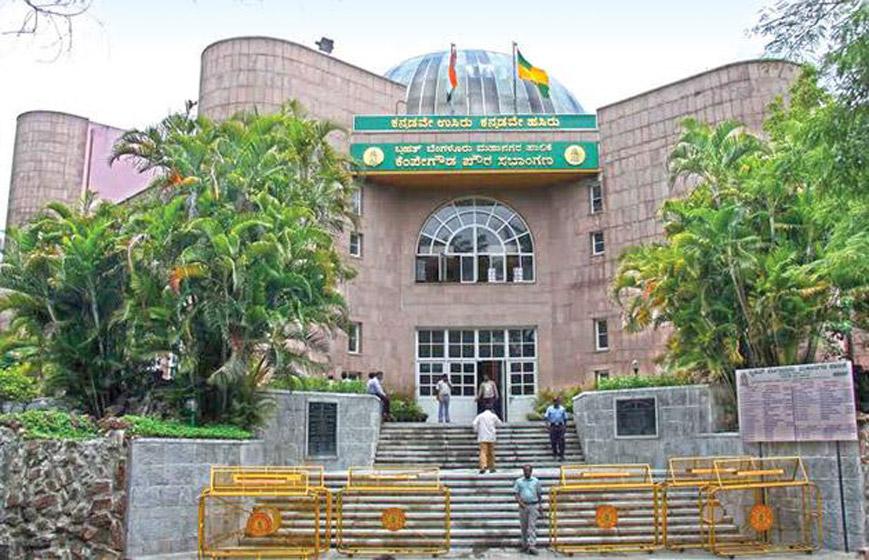
V. RAVICHANDAR
Against the backdrop of the perceived failure of the objectives of trifurcating the Delhi Municipal Corporation, it is worthwhile checking out a similar exercise involving multiple municipal corporations that is underway in Bengaluru. In late 2014, the Karnataka Chief Minister announced a decision to split the Bruhat Bengaluru Mahanagar Palike (BBMP) and setting up of a three-member Expert Committee to advise the government on it. The Committee felt the prime need was to reimagine the city’s governance and administration. The ‘patient’ was ‘diseased’ and splitting it into multiple parts without fixing the underlying problems was unlikely to improve the quality of living in Bengaluru. The government concurred and the mandate of the Committee was changed to ‘restructuring BBMP’. From November 2014 to June 2015, the Committee worked on multiple fronts — study of global best practices in city-region management, similar exercises (including the Delhi trifurcation), stakeholder meetings (over 1,000), online suggestions and collation of Bengaluru data sets (including detailed spatial mapping) to help make the final recommendations. The Committee’s report can be accessed at www.bbmprestructuring.org. The chart sets out the suggested three-tier governance and administration structure for Bengaluru. In essence, the key elements of the Committee’s suggestions were strengthening ward governance through greater clarity on ward composition (proportional representation with citizen involvement) and ward functioning (what can be done at the ward level should be done there); five municipal corporations at mid-tier (with two zones per corporation); an apex body called the Greater Bengaluru Authority (GBA) for integration across the corporations and multiple government parastatal agencies; a city Finance Commission to decide on fiscal transfers and an Ombudsman for addressing citizens’ grievances. While there was criticism of the solutions suggested, most conceded that the Committee had identified the infirmities of the current system — weak governance and administration structure with huge state interference, titular one-year mayor, dysfunctional standing committees, negligible citizen participation, trust deficit between citizen and government due to leakages in civic contracts, speed money for permissions and overlooking of violations, lack of accountability and no outcome orientation due to multiple agencies operating in silos, low human capacity in government, financial mismanagement compounded by opaque reporting practices, disdain for planners and poor implementation leading to deteriorating quality of life in the city. Big debate The multiple corporations suggestion was both liked and disliked. The critics repeatedly pointed to the failed Delhi example and stressed the Bengaluru brand would be diluted by splitting the corporation. In our view, the Delhi trifurcation was rushed through without adequate thought on the overarching governance structure and ensuring basic financial sustainability for each corporation. An apex body like the proposed GBA is essential to ensure inter-corporation coordination as well as to bring the independent civic government agencies such as those relating to water, transport, energy and so on under a common leadership. A city Finance Commission is necessary for an impartial examination of corporation finances and recommending apex-level and inter-corporation fiscal transfers. A detailed spatial mapping and study of ward characteristics is necessary before embarking on fixing the boundaries of the multiple corporations’ jurisdiction. One of the arguments against splitting the BBMP was the fear of loss of the Bengaluru brand. This implicitly assumes brand Bengaluru is dependent on the alphabet soup, BBMP, remaining a single unit forever. This is not the case. A city’s brand is shaped by its people, ethos, culture, vibrancy and promise, among a host of other factors. BBMP can by no yardstick be considered the signpost of brand Bengaluru and it is extremely unlikely that the founder of Bengaluru visualised a future-day BBMP as the flagbearer of the city. The recommendation to divide it into multiple units is driven by a desire to make the city more manageable and more liveable. London has 33 boroughs but its brand is one of the best in the world. A review of best practise in city-region management clearly shows that top mega-cities follow multi-municipal structures (think London, Paris, Sao Paulo, Tokyo) and that decentralisation and devolution of powers is felt to be useful as cities grow. Finding optimal scale and size of governance is an iterative process and the number of corporations is based on balancing power, economy and accountability. To those who still insist that a single corporation would do the job, this has been my reply. We have multiple skeletons in our single civic body. Can this skeleton be better ‘hidden’ in a 30,000-sq-foot mansion or a 1,000-sq-foot tenement? The smaller the set-up, the greater the chance of detection and something being done about it. Smaller units of governance and administration are certainly better to fix our woes, more so given the spiralling population growth and urban sprawl. Devolution and decentralisation are the way forward. State & city Another major criticism related to having the chief minister in charge of the GBA over the next five-10 years before handing over to a directly elected mayor. Many of us have cried ourselves hoarse over the years about the undue (stranglehold?) influence of the state over city matters. Has it changed anything? If anything, it has got worse over the years as successive state governments have recognised the ‘promising’ characteristics of large, growing cities in the country. They have used multiple mechanisms to control the city through administrative measures, legislative powers, withholding grants, notification/de-notification and then some more. This is akin to back-seat driving, power without accountability. One would rather have them occupy the visible front seat, with clear bottomline accountability for their actions. We also have a legacy problem. This state control has strengthened over time. For instance, we today have parastatals like the BWSSB (Bangalore Water Supply and Sewerage Board), Bangalore Development Authority (BDA), Bangalore Metropolitan Transport Corporation (BMTC), Bangalore Electric Supply Company (BESCOM) and so on which operate in silos, taking their instructions and cues from the state. Putting this genie back in the box is not a task for mere mortals, even directly elected metropolitan mayors. On the principle of ‘You broke it, you fix it’, the state (through the office of the CM) has a responsibility to set it right for a future-day city leadership to take over the reins. In our current system, no one else has a remote chance of getting our parastatals to fall in line. Hence the suggestion of handing over the reins to the CM for a limited period. Delhi has been a boon and bane for other cities. Whether it is the bus rapid transport (BRT) system, the trifurcation or alternative governance experiments, citizens elsewhere look hopefully to the capital city for future pointers — only to have their hopes dashed. It ends up derailing and delaying similar exercises elsewhere. As urbanisation increases, our cities badly need a complete overhaul of flawed structures and systems. We talk of smart cities but it is unlikely to work in our dysfunctional governance and administration arrangements. It is akin to placing a 2015 new age processor on a 1980s-era PC-XT motherboard. It will stall. One hopes that local state leadership exhibits the necessary political will and vision to truly empower our cities as engines of growth. V. Ravichandar is a member of the Expert Committee tasked with reimagining Bengaluru’s governance and administration
Comments
Currently there are no Comments. Be first to write a comment!




